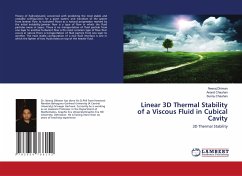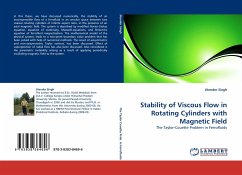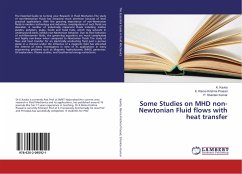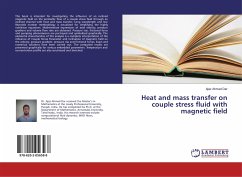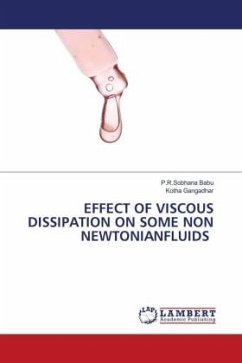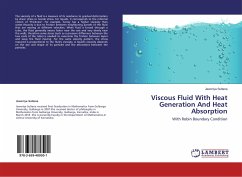
Viscous Fluid With Heat Generation And Heat Absorption
With Robin Boundary Condition
Versandkostenfrei!
Versandfertig in 6-10 Tagen
27,99 €
inkl. MwSt.

PAYBACK Punkte
14 °P sammeln!
The viscosity of a fluid is a measure of its resistance to gradual deformation by shear stress or tensile stress. For liquids, it corresponds to the informal notion of "thickness". For example, honey has a higher viscosity than water.Viscosity is due to friction between neighboring parcels of the fluid that are moving at different velocities. When fluid is forced through a tube, the fluid generally moves faster near the axis and very slowly near the walls, therefore some stress (such as a pressure difference between the two ends of the tube) is needed to overcome the friction between layers an...
The viscosity of a fluid is a measure of its resistance to gradual deformation by shear stress or tensile stress. For liquids, it corresponds to the informal notion of "thickness". For example, honey has a higher viscosity than water.Viscosity is due to friction between neighboring parcels of the fluid that are moving at different velocities. When fluid is forced through a tube, the fluid generally moves faster near the axis and very slowly near the walls, therefore some stress (such as a pressure difference between the two ends of the tube) is needed to overcome the friction between layers and keep the fluid moving. For the same velocity pattern, the stress required is proportional to the fluid's viscosity. A liquid's viscosity depends on the size and shape of its particles and the attractions between the particles.




